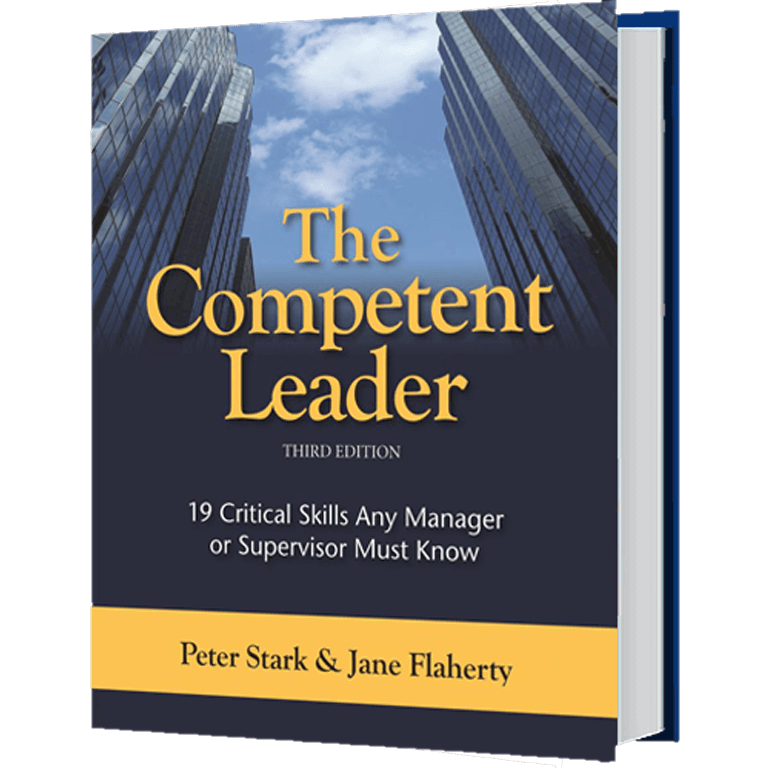Employee Engagement, Executive Coaching
Strategies for When Your Performance Feedback Conversation Goes South
Effective communication is key to being an effective leader. Yet, not all conversations go as smoothly as we would like. Particularly when you need to address performance issues with an employee who resists acknowledging them, we have all been there, dreading that tough conversation. In this situation, you need the right approach to gain the desired outcome. Below, I have listed three common behaviors we typically see from difficult employees, along with tips to help you manage them effectively before the performance conversation goes south.
- The Ultimatum: In our coaching, leaders often ask how to handle it when an employee draws a line in the sand and gives you an ultimatum. Handling this is simple: flip the ultimatum. Usually, in this situation, the employee has stated that you need to accommodate them for some reason or another to avoid a task or to lower your expectations for them. Which you seldom want to do. At that point in the conversation, you should calmly inform the employee: “The requirements of this position include [state the required task].” Are you telling me that you are unable or unwilling to perform the duties of this position? This, of course, is not the direction the employee wanted to go, nor did they see coming, which usually turns the conversation back to a more agreeable position.
- Hot Head Response—The other day, a leader I was coaching indicated that they were dreading having to give a team member performance feedback because they always get highly upset. Other common responses include anger, high emotion, or rudeness. When you feel this way, know that the employee has accomplished their goal. They want to make you so uncomfortable that you never give them performance feedback again. Yes, that is right, they have learned in life that if they up the ante on emotion, people will leave them alone. In this situation, it is very important not to match their level of emotion and stay calm. Don’t back down either. We encourage you to get calmer, quieter, and state the expectation. Then, ask them what they are going to do differently to meet it. If they continue with high emotion, it is time to involve HR in the conversation or have another leader join the discussion.
- The Comparison: Another favorite tactic employees often use is comparing their performance to that of another employee. This is more challenging to handle for several reasons. 1. You can’t discuss another employee’s performance with them. 2. It is a deflection tactic. And 3, sometimes you may have different performance expectations for different levels of performance or positions. In this situation, ask the employee if it is possible for you to talk to other employees about their performance in a one-on-one setting, just as you are with them? It is usually best to redirect them by stating that you don’t discuss other employees’ performance. Then, restate your expectations of their performance and ask them what they will do differently to meet the expectations.
- 100,000 Excuses: Similar to the ultimatum, it is common to hear from difficult employees that they cannot complete the task at hand because of a multitude of reasons—or excuses, as we like to call them. Your response should be: “I need someone in this position who can do XYZ. Can you perform the duties of this position? Continue to bring them back to what is required for the position. If they state they can’t, then you can help them find another position that may be better suited to them, or you can always share them with your best competitor.
Having strategies for handling difficult employees is great, but you also need some time to prepare for your meeting. Below are some additional preparation strategies to help you with the discussion. Remember, crafting your message requires preparation:
- Follow-Up Regularly: Reinforce positive changes through regular check-ins, rather than waiting solely for their formal review. This involves providing feedback when you notice the change, either via email or verbally, as well as scheduling a formal follow-up meeting. We recommend scheduling the next follow-up meeting one week prior to the end of the current meeting. This conveys to the employee that you are serious about your expectations. Indicate that in the meeting, you will review the successes and opportunities the employee has to continue growing and developing in the areas identified for improvement. Continuous communication ensures employees stay on track and are encouraged by being recognized for their successes.
- Document! Documenting all performance issues and conversations in the employee’s file is so important. After meeting with an employee to discuss their performance, send an email summarizing the discussion and outlining the changes the employee will make moving forward. It always surprises me when I hear from a leader about a difficult situation and find out they haven’t followed up on the conversation or even discussed the behavior with the employee yet. If you ever need to let an employee go due to performance issues, you must document that you have discussed the matter with the employee and provide a record of the discussion. HR can’t support you if you give an employee a stellar review without documenting performance issues.
- Use “I” Statements: Frame observations using “I” statements (e.g., “I noticed…”) to avoid sounding accusatory while expressing genuine concern.
- Focus on Tasks and Outcomes: Ensure you focus on the task or outcome you want to see instead of personal trials. This will help keep the conversation work-based and not personal.
- Ask Questions: It is important to ask questions that will lead the employee to see or admit a problem. That could look like: “If you are unable to complete this report error-free, what impact will that have on the team?” They need to see how their work affects the department, team, and their employment.
- Highlight Positive Outcomes: Clearly communicate how addressing these issues enhances your team’s contribution. For example, you might say: “By completing your report error-free, you will have more time in your day to complete other tasks, as you won’t have to redo the report.”
Transforming a resistant employee into a performing one involves more than just delivering information—it requires a plan, setting expectations, and following up to ensure the employee is executing the plan and meeting your expectations. By using these strategies, the next time you’re faced with challenging conversations, you’ll find yourself better equipped for a successful outcome and on your way to building stronger relationships with your team.
|
Dusty Tockstein Dusty is a senior consultant at Peter Barron Stark Companies. Dusty works with clients to improve their corporate culture through a variety of tools, including Employee Engagement Surveys, 360 Leadership Development Assessments, Leadership Coaching, and Organizational Assessments. |










Leave a reply